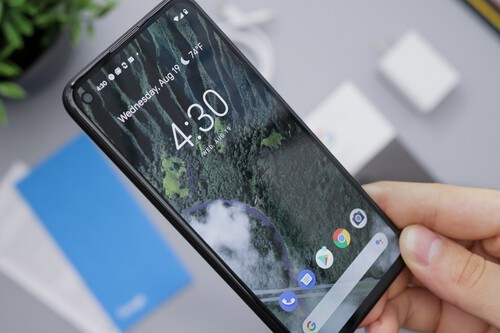There’s a new obsession among major Android manufacturers: offering as many years of support as possible. Until not too long ago, most were content with just two years of updates—a timeframe that now seems unacceptable for today’s top-tier devices.
In the past two years, Android phones have promised up to seven years of updates. This number sounds almost magical, dramatically extending a phone’s lifespan (as long as those updates help more than they harm). The problem? It’s the same one that has existed since Android’s early days.
A clear obsession. Seven years of updates. Samsung was the first to push the limit, offering more support than Google. In response, the Google Pixel also began offering seven years of system updates and security patches.
It’s a record for the operating system, driven mainly by improved support from component manufacturers like Qualcomm. Their latest processors support up to eight years of updates. But the question remains: Does it make sense?
Fragmentation. Promising years of upgrades sounds great. But only one manufacturer delivers them promptly: Google. Samsung just announced its Android 15 update for select high-end devices—even though the version has been available since October.
Users have come to accept that fast upgrades arrive about six months after Google releases the stable version and another six months before the next one—Android 16—appears. It’s a cycle that reinforces Android’s age-old issue: fragmentation.
Only 7% of the world’s Android devices run Android 15. That means 93% are outdated.
Fragmentation is inevitable with an operating system that powers more than 70% of devices globally, given the wide range of manufacturers and models. But even with that in mind, 7% is a staggeringly low adoption rate.
It doesn’t matter too much. A few years ago, updating to a new operating system version meant major changes to the design language and a host of new features. More recently, updates focus on stability and efficiency rather than sweeping visual or functional changes.
The most crucial recent innovation—AI—comes via models like Gemini Nano, which can be implemented without upgrading the operating system version. For most users, staying current on security patches and avoiding very old versions is enough.
Manufacturers, on the other side. Android has moved beyond the old two-year update window. Today, four to five years is the new minimum. Manufacturers are pushing past that, aiming to get users closer to 10 years of support.
Xiaomi product manager Daniel Desjarlais explained the company’s position: It doesn’t offer more years of support because the average user keeps their phone for just three years—not seven.
OnePlus COO and president Kinder Liu has a similar view:
“Imagine your phone is a sandwich. Some manufacturers are now saying that the filling in their sandwich—their phone’s software—will still be good to eat in seven years’ time. But what they’re not telling you is that the bread in the sandwich—the user experience—might be moldy after four years. Suddenly a seven-year software update policy doesn’t matter, because the rest of your experience with the phone is terrible.”
In short, manufacturers are waging a war over operating system updates. It’s a battle where only Google consistently meets deadlines—and where even the most optimistic companies question what Android will look like seven years from now.
Image | Daniel Romero (Unsplash)
Related | A New Android Feature Could Restart Your Phone Every Three Days—and That’s Good News



